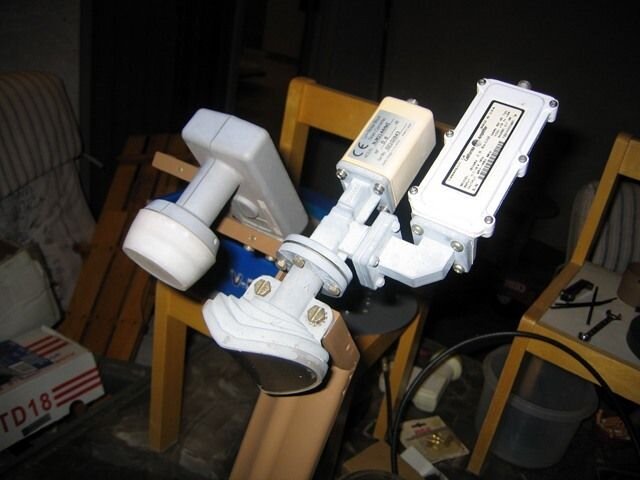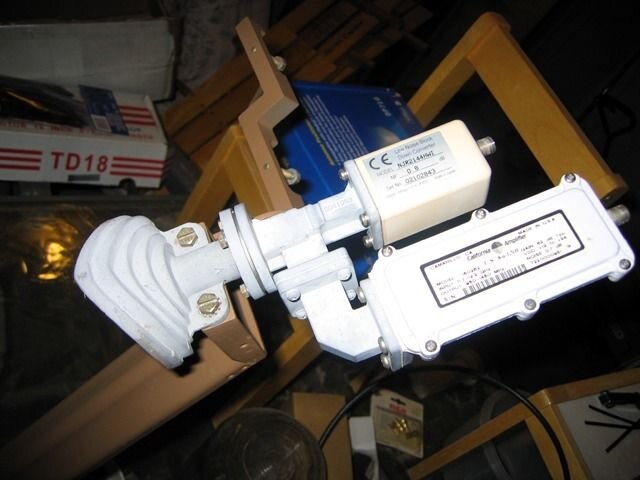Pictures are going to have to wait a bit, gf used all the rechargable batts for the camera..........just charging a set now. It ain't pretty but it does work. Now I just have to get it all hooked back up in the house and reprogram the receiver.
123w and 129w with 1 Meter Primestar
- Thread starter linuxman
- Start date
- Latest activity Latest activity:
- Replies 84
- Views 15K
You are using an out of date browser. It may not display this or other websites correctly.
You should upgrade or use an alternative browser.
You should upgrade or use an alternative browser.
- Status
- Please reply by conversation.
Well the pics are going to have to wait 'till tomorrow, got some rain then it got dark. Perhaps after work tomorrow.
Success again!!!
The trimmed down Pstar/Hughes feed-horn, works as well as the original did. SQ back up to 75% on G10 11720 V.
So, now that I have tried successfully two different ways of making the original Pstar LNBFs work while adding an additional LNBF for a second satellite, the question now becomes,"Is it worth the extra trouble?"
Which brings on the second question, "Would it just be easier and cheaper to buy a new style LNBF to replace the original?"
The modified Dish LNBF works fine, just fits a little sloppy. The original gets a little better signal. First because the tube is shorter, and second because of the ridge inside the Dish tube.
I did have to make a small change in the adjusting bracket. Had to take out one of the tightening nuts to allow the LNBF to drop down far enough because of the way the new clamp attaches. It is a little higher than the loose conduit clamp.
I might have to look into putting the horizontal attaching bracket between the base and the clamp with an extra nut there for tightening.
Here are the new pics:

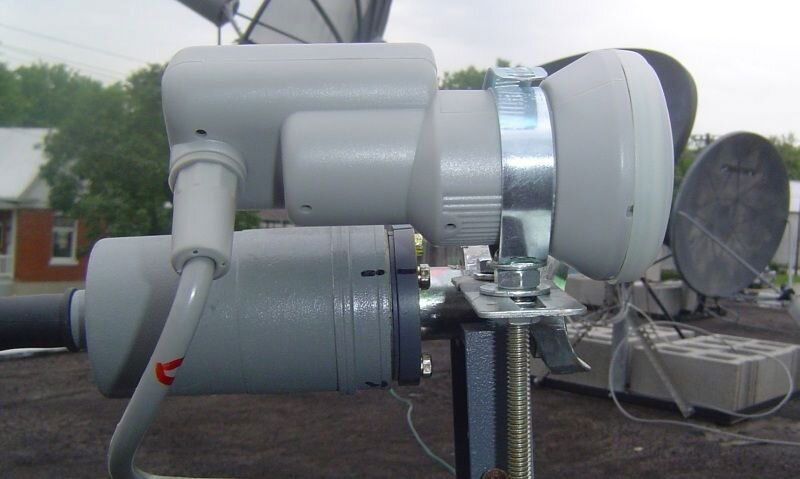
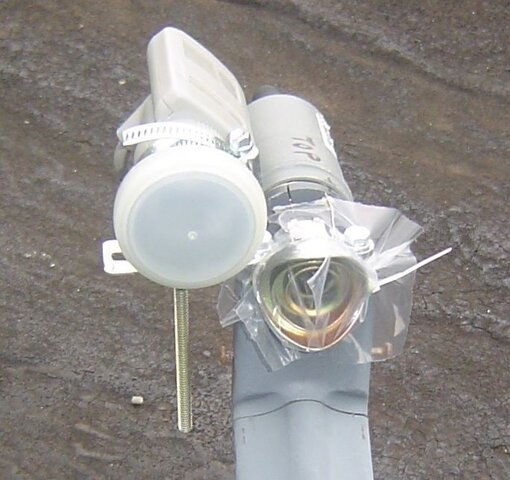
I also took a couple of pictures of the 1M Primestar and what I have to shoot through to get Hispasat as I described above in an earlier post. The camera was sitting on the bottom support arm for both shots.
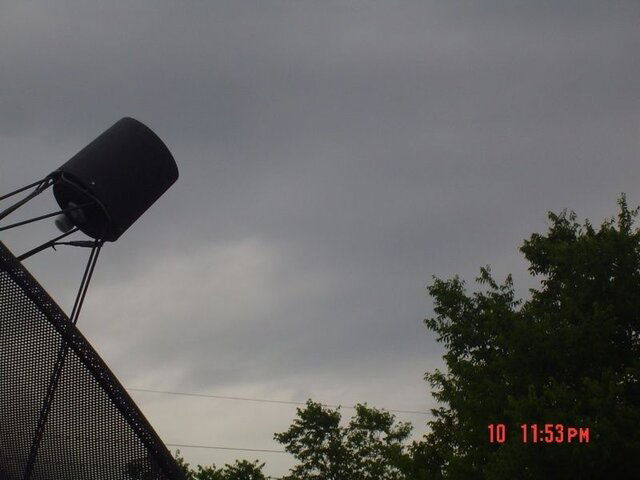
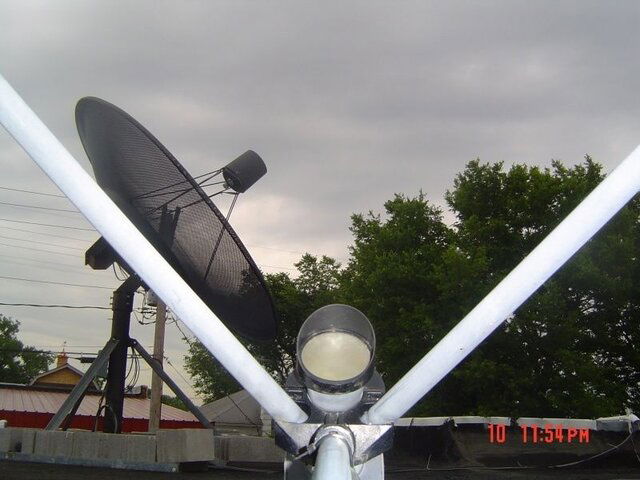
All in all it has been a fun experiment so far. The modifications have worked well in both instances.
Now just have to figure out the procedure I want to follow on future multi-LNBf dishes.
Thanks to all for all your help!!
Fred
The trimmed down Pstar/Hughes feed-horn, works as well as the original did. SQ back up to 75% on G10 11720 V.
So, now that I have tried successfully two different ways of making the original Pstar LNBFs work while adding an additional LNBF for a second satellite, the question now becomes,"Is it worth the extra trouble?"
Which brings on the second question, "Would it just be easier and cheaper to buy a new style LNBF to replace the original?"
The modified Dish LNBF works fine, just fits a little sloppy. The original gets a little better signal. First because the tube is shorter, and second because of the ridge inside the Dish tube.
I did have to make a small change in the adjusting bracket. Had to take out one of the tightening nuts to allow the LNBF to drop down far enough because of the way the new clamp attaches. It is a little higher than the loose conduit clamp.
I might have to look into putting the horizontal attaching bracket between the base and the clamp with an extra nut there for tightening.
Here are the new pics:



I also took a couple of pictures of the 1M Primestar and what I have to shoot through to get Hispasat as I described above in an earlier post. The camera was sitting on the bottom support arm for both shots.


All in all it has been a fun experiment so far. The modifications have worked well in both instances.
Now just have to figure out the procedure I want to follow on future multi-LNBf dishes.
Thanks to all for all your help!!
Fred
Ok, finally the pictures, not sure how this is going to work so I'll post it and edit if necessary. Enjoy!
http://www.satelliteguys.us/photopost/showgallery.php/ppuser/52955/cat/500
I'll just post the link to my gallery as I can't figure out how to properly add pics to my post.........I know I've done it before but.........anyway, they are all labeled "the whitesprings project".
http://www.satelliteguys.us/photopost/showgallery.php/ppuser/52955/cat/500
I'll just post the link to my gallery as I can't figure out how to properly add pics to my post.........I know I've done it before but.........anyway, they are all labeled "the whitesprings project".
Those are some great pictures Inno!!!
You put a lot of work into your project.
I would not have thought to make a wooden holder, but yours looks very nice!
That's a nice looking dish too.
Thanks,
Fred
You put a lot of work into your project.
I would not have thought to make a wooden holder, but yours looks very nice!
That's a nice looking dish too.
Thanks,
Fred
I did the rough in for distance etc. just by holding the LNB in my hand and getting it in the right position and measuring the distance between LNBs. Then I took two hole saws of approximately the right size for the LNBs and cut two holes the predetermined distance apart and cut out the block. Then put it all together and fine tuned. The quality is hovering between 55-60% on Whitesprings which is fine with me. G-10R is somewhat lower between 40-55% depending on transponder.
All in all it was fun and inspiring as well.........I look forward to more "multi-lnb" setups.
All in all it was fun and inspiring as well.........I look forward to more "multi-lnb" setups.
All in all it was fun and inspiring as well.........I look forward to more "multi-lnb" setups.
I am looking forward to some more "testing" too!!
Today, I am going to perform just a minor surgery on an OEM Primestar Feed-horn. This is the original that came with the dish. I want to take as little metal off as possible and still make this work. Not that I don't mind grinding with a dremel for a couple of hours, but if it isn't needed, why do it.
Here are some pics of the proposed minor surgery and a lowered type bracket that I discovered I had several of.
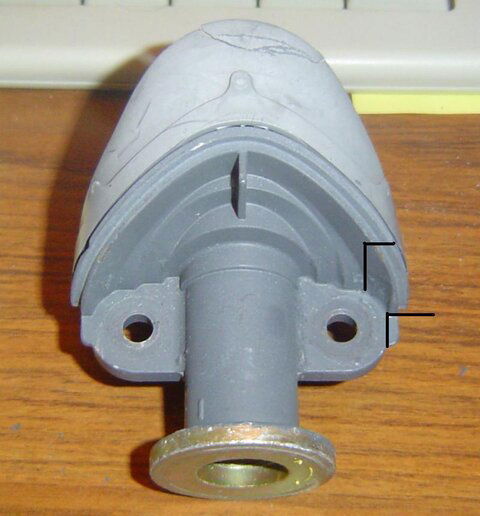
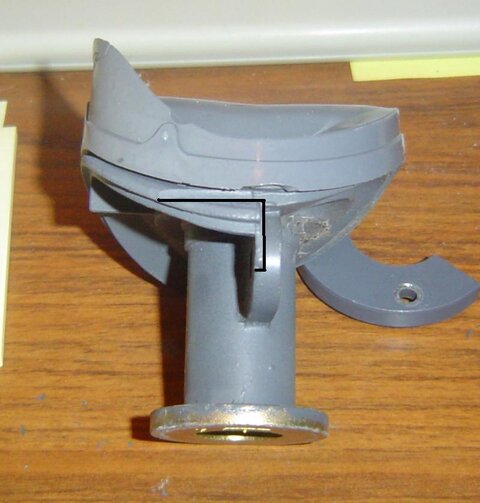
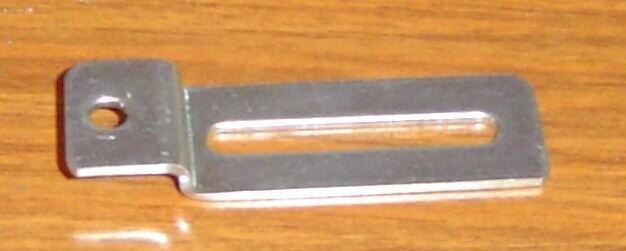
The combination of the two procedures may work, and will allow a minimal amount of cutting and still utilize the OEM LNBFs. The big obstacle (other than the Feed-horn itself) is the size of the body of the OEM Primestar LNB. The Hughes LNB body is smaller, but what I deal with mostly is the original.
I am going to try and do all of this "test" today. Will post back later.
Fred
I am either getting good, or lucky. Has to be one of the two.
I think I have found the perfect combo of LNBFs, brackets, and hardware for G10 (123W) and G27 (129W) multi-sat setup. I posted pictures earlier of the brackets I found and the modifications I was going to make to the OEM Primestar LNBf for the final test on this experiment.
Here are some pics after I made the modifications to the LNBF and the bracket.
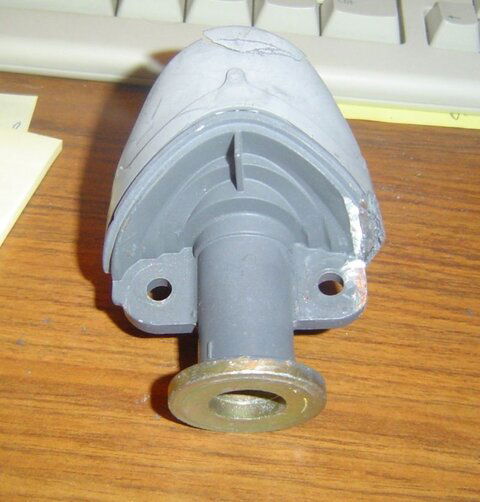
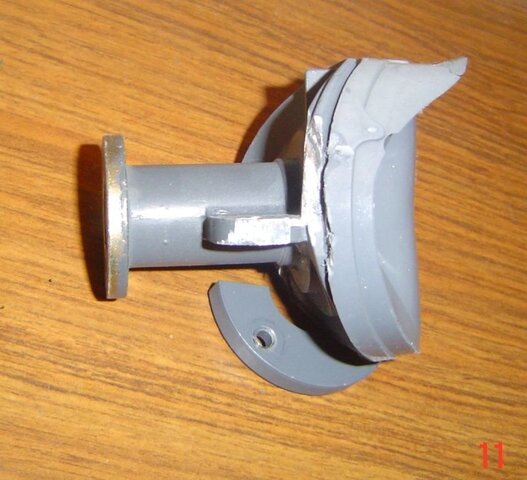
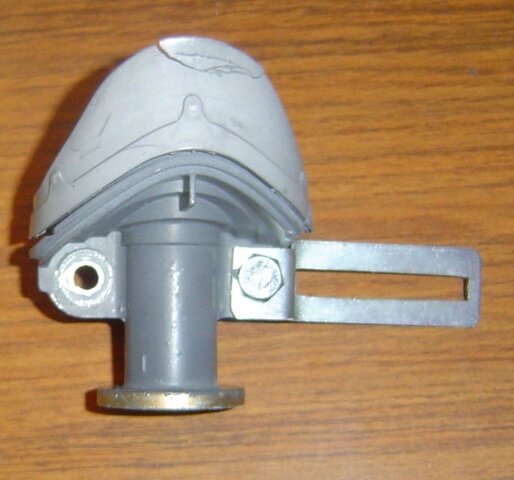
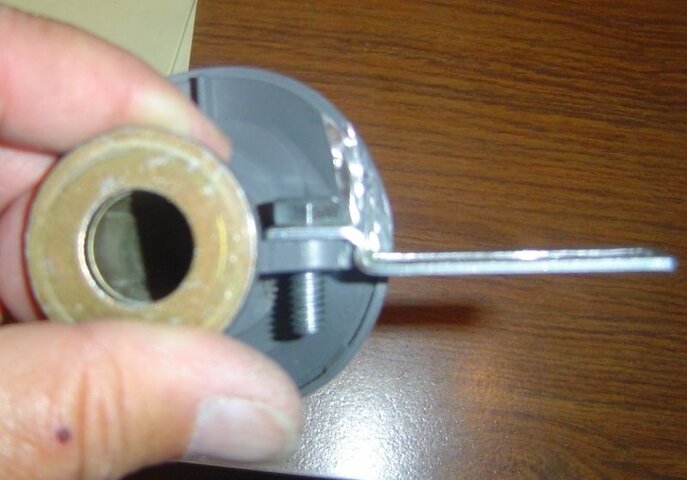
The off-set bracket caused the LNBF holder to be enough lower to allow the tightening nut to be put back on the bolt and provided what I think is the proper focal length.
Whatever the reason, I hit 75% SQ on G27 White Springs today. So I have both G10 11720 V TP and White Springs at 75% SQ.
This same combo might not work on anything closer than 6 degrees, and it might not work on a different combo of satellites, but it works great for this combo. You'll see in the following pics, there isn't much room to move closer or lower.
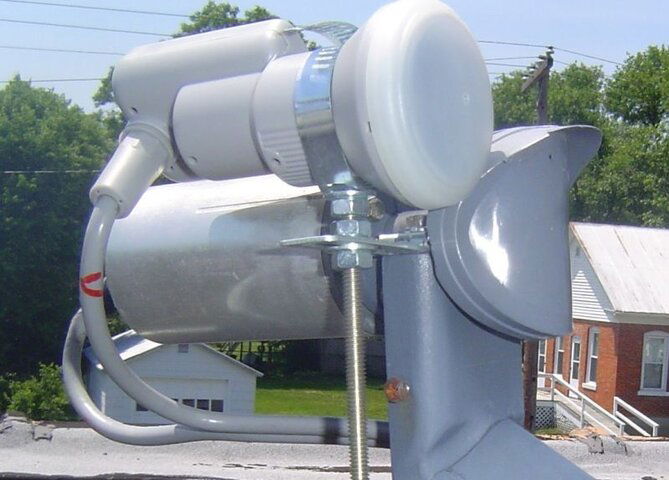
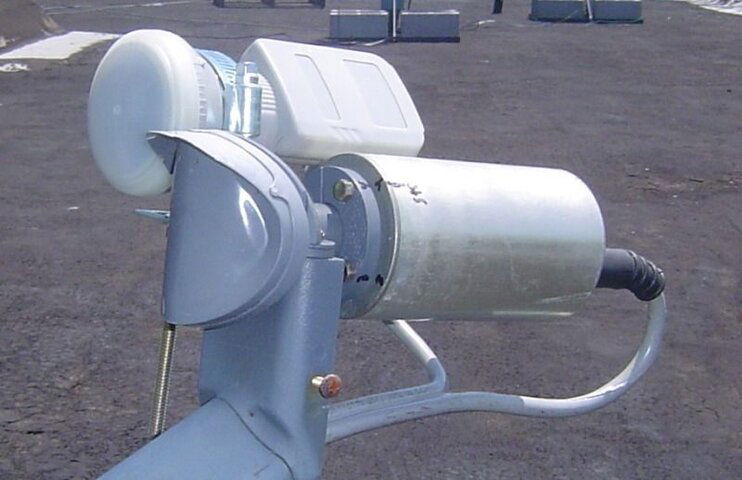
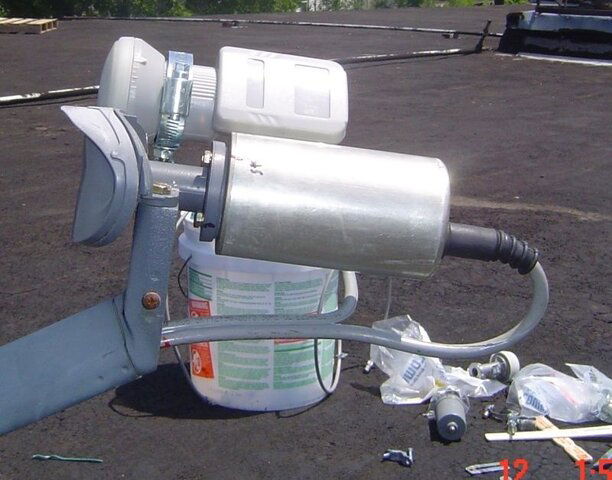
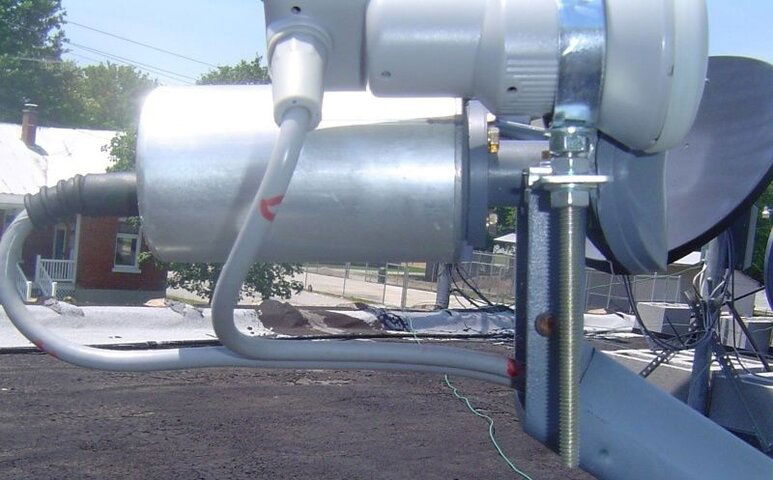
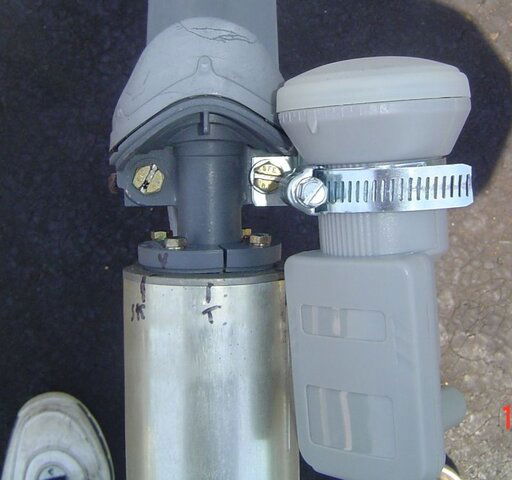
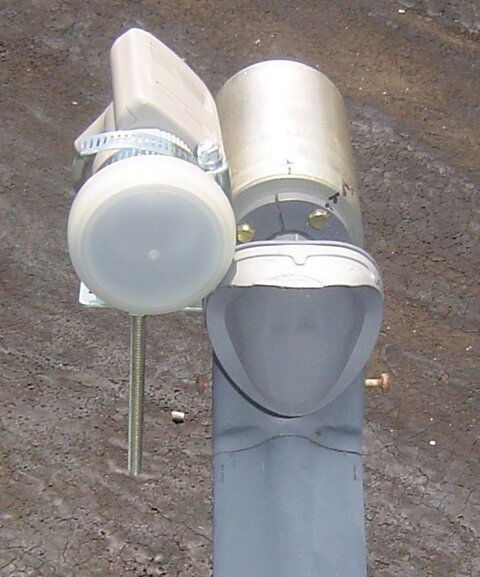

So I am moving on to take down the PStar 75e that the family setup is using for White Springs, and changing their G10 dish to be a multi-sat setup just like this one.
I am then going to use that mount and another 84e on my setup to try for a combo somewhere else in the arc. Maybe AMC3 and G25 or AMC6 and AMC3.
It will be someplace new and different than this combo, and I am looking forward to it.
I want to pass a word of encouragement to those of you who have tried this, and those who are going to try.
Don't give up!! Have a little patience! Try something different if what you are using doesn't work! But above all else, be persistent. You will get it done, and you will be glad you did.
Thanks to all those who encouraged me at the beginning of this experiment. I came really close to giving up after the first day.
I am glad I didn't!!
Fred
I think I have found the perfect combo of LNBFs, brackets, and hardware for G10 (123W) and G27 (129W) multi-sat setup. I posted pictures earlier of the brackets I found and the modifications I was going to make to the OEM Primestar LNBf for the final test on this experiment.
Here are some pics after I made the modifications to the LNBF and the bracket.




The off-set bracket caused the LNBF holder to be enough lower to allow the tightening nut to be put back on the bolt and provided what I think is the proper focal length.
Whatever the reason, I hit 75% SQ on G27 White Springs today. So I have both G10 11720 V TP and White Springs at 75% SQ.
This same combo might not work on anything closer than 6 degrees, and it might not work on a different combo of satellites, but it works great for this combo. You'll see in the following pics, there isn't much room to move closer or lower.







So I am moving on to take down the PStar 75e that the family setup is using for White Springs, and changing their G10 dish to be a multi-sat setup just like this one.
I am then going to use that mount and another 84e on my setup to try for a combo somewhere else in the arc. Maybe AMC3 and G25 or AMC6 and AMC3.
It will be someplace new and different than this combo, and I am looking forward to it.
I want to pass a word of encouragement to those of you who have tried this, and those who are going to try.
Don't give up!! Have a little patience! Try something different if what you are using doesn't work! But above all else, be persistent. You will get it done, and you will be glad you did.
Thanks to all those who encouraged me at the beginning of this experiment. I came really close to giving up after the first day.
I am glad I didn't!!
Fred
Hey Shawn!!
Those are great pictures!
That's a neat setup with the way the one LNB comes out the side off the center like that.
There have been some great engineers along the way in the satellite industry. I hope we can keep the hobby moving along and out into the future.
Fred
Those are great pictures!
That's a neat setup with the way the one LNB comes out the side off the center like that.
There have been some great engineers along the way in the satellite industry. I hope we can keep the hobby moving along and out into the future.
Fred
questions and fine-tuning hints
Linuxman -
couple of questions:
How did the calculations work out for locating the second LNB?
For DBS , hand-holding to find the second bird is how I'd go.
But for squirly, skewable, low-strength FTA signals, the calcs get you into the right neighborhood.
I just wonder how far from our numbers you chose to mount the LNBs, and how much play you found?
If you like, we could calculate distance and angle instead of "how far sideways", and "how far up".
That would be particularly useful for those with a skewable mount, or someone trying to use a two-horn LNB (like Dish's Twin, StarChoice, or similar).
When the LNBs are very far apart, it's probably wise to aim the outboard LNBs toward the center of the dish, not parallel to the first LNB.
Ya might check - outboard LNBs should probably mounted on an arc toward the dish.
So, if you push them a little closer to the dish, it may improve reception.
Considering all the pictures you posted, I wish now I'd put a little anole sticker on that LNB!
Linuxman -
couple of questions:
How did the calculations work out for locating the second LNB?
For DBS , hand-holding to find the second bird is how I'd go.
But for squirly, skewable, low-strength FTA signals, the calcs get you into the right neighborhood.
I just wonder how far from our numbers you chose to mount the LNBs, and how much play you found?
If you like, we could calculate distance and angle instead of "how far sideways", and "how far up".
That would be particularly useful for those with a skewable mount, or someone trying to use a two-horn LNB (like Dish's Twin, StarChoice, or similar).
When the LNBs are very far apart, it's probably wise to aim the outboard LNBs toward the center of the dish, not parallel to the first LNB.
Ya might check - outboard LNBs should probably mounted on an arc toward the dish.
So, if you push them a little closer to the dish, it may improve reception.
Considering all the pictures you posted, I wish now I'd put a little anole sticker on that LNB!
Hey Anole!
I never have actually measured center to center, but I will try and remember to do that the next time I go to the roof.
I think your idea of calculating distance and angle might be a better way to go. I never really used the measurements after the first trial. After that, I knew about where it was supposed to be, and with a nice slider bracket, it gets lots easier.
I think the trick might be getting the bracket rail low enough to allow room for the adjustment nuts, and other holders to be above the bar and not raise the LNBF so high that you lose signal. The other trick is to have the strongest TP on the satellite you are trying to hit in the setup menu. It will help you find the first instance. After that it is a matter of fine tuning.
Very small movements on the rail and up and down.
I wish you had too. Your LNBF and help were instrumental in making this experiment a success!! : :clap
: :clap 
Together all of us over the course of this thread have put up a lot of information, calculations, diagrams, and pictures for anyone trying to do this experiment.
Thanks again!!
Fred
I never have actually measured center to center, but I will try and remember to do that the next time I go to the roof.
I think your idea of calculating distance and angle might be a better way to go. I never really used the measurements after the first trial. After that, I knew about where it was supposed to be, and with a nice slider bracket, it gets lots easier.
I think the trick might be getting the bracket rail low enough to allow room for the adjustment nuts, and other holders to be above the bar and not raise the LNBF so high that you lose signal. The other trick is to have the strongest TP on the satellite you are trying to hit in the setup menu. It will help you find the first instance. After that it is a matter of fine tuning.
Very small movements on the rail and up and down.
Considering all the pictures you posted, I wish now I'd put a little anole sticker on that LNB!
I wish you had too. Your LNBF and help were instrumental in making this experiment a success!!
 : :clap
: :clap 
Together all of us over the course of this thread have put up a lot of information, calculations, diagrams, and pictures for anyone trying to do this experiment.
Thanks again!!
Fred
Was thinking about bending some conduit (or something similar) to an arc and mounting it across the dish, lower than the existing LNB mount then adding some sort of adjustable bracket (I've seen a few different ones on E-bay) to make it infinitely adjustable.
Does anyone know the maximum spread you'd get with a round dish before you'd have serious signal loss? I know that with the Star Choice "oval" shaped dish the spread is greater. I thought someone had once said 15deg. was the max you could deviate from the center of a round dish before you had sever degredation.
Does anyone know the maximum spread you'd get with a round dish before you'd have serious signal loss? I know that with the Star Choice "oval" shaped dish the spread is greater. I thought someone had once said 15deg. was the max you could deviate from the center of a round dish before you had sever degredation.
Hey Inno!
Keith Brannan in post #35 above had this to say about how far you can stretch the LNBFs:
That information was in reference to an 80cm round dish if I remember correctly. He also had some very good pictures following that post.
Fred
Keith Brannan in post #35 above had this to say about how far you can stretch the LNBFs:
The compromise on signal quality is usually small (10-15%) if the satellite you are trying to get is close to your centre (8 degrees or under). Anything over that (which in my case usually equates to over 3 1/2 inches off centre at the top and middle of the arc) signal loss increases substantially, and exponentially.
That information was in reference to an 80cm round dish if I remember correctly. He also had some very good pictures following that post.
Fred
So by that logic then what we're doing with 123w and 129w is close to the limitations of this setup. I'm guessing that is 8deg on either side of the lnb which is close to the 15deg I thought I remember hearing.
I think that would probably be correct.
But another 2 degrees is another whole satellite at pretty decent signal.
If it was another satellite like G27 and White Springs, you could go further and have less signal and still be able to watch it.
Fred
But another 2 degrees is another whole satellite at pretty decent signal.
If it was another satellite like G27 and White Springs, you could go further and have less signal and still be able to watch it.
Fred
Too bad there's not much else of interest around G10R or G27.......and 2 degrees would require a very extensive lnb/feedhorn modification.......possibly more than a couple of hours with a dremel..........although I have a air powered cutoff wheel for the compressor that works a lot quicker than my dremel 


So by that logic then what we're doing with 123w and 129w is close to the limitations of this setup. I'm guessing that is 8deg on either side of the lnb which is close to the 15deg I thought I remember hearing.
I found that minimum signal loss (10-15%) occurred in that range, and that the further out you went from that the greater and quicker the loss became (based on my movement of AMC3 and G25, see my post #35 for explanation). The closer to the centre, the better!
My one dish has a spread of 21 degrees (72 - 93) and the furthest one out, AMC6 (five inches off centre and about 11-12 degrees off centre - there is no centre LNB) is very strong considering how far out it is, the "regulars" range in the 60s to the high 80s. Whereas G26, which is closer to the centre, has significant signal loss, especially horizontal.
So, all in all, 8 degrees on either side centre is fairly good, past that you might have a greater signal loss, but still can be worthwhile depending on the satellite. The way I look at it, even if you only get the strongest transponders at a much reduced strength, any watchable signal is definitely better than no signal at all!
I found that minimum signal loss (10-15%) occurred in that range, and that the further out you went from that the greater and quicker the loss became (based on my movement of AMC3 and G25, see my post #35 for explanation). The closer to the centre, the better!
My one dish has a spread of 21 degrees (72 - 93) and the furthest one out, AMC6 (five inches off centre and about 11-12 degrees off centre - there is no centre LNB) is very strong considering how far out it is, the "regulars" range in the 60s to the high 80s. Whereas G26, which is closer to the centre, has significant signal loss, especially horizontal.
So, all in all, 8 degrees on either side centre is fairly good, past that you might have a greater signal loss, but still can be worthwhile depending on the satellite. The way I look at it, even if you only get the strongest transponders at a much reduced strength, any watchable signal is definitely better than no signal at all!
Very true, and the maximum number of satellites with the minimum number of dishes is also quite desirable. Still thinking about a T-90 which should cover all of the regular stuff but I'll have to clear some trees first.
Just noticed in your sig. that you have Echostar7 at 119 on the same dish as G10R and G27, I didn't think of doing that.........I actually just stuck a dish 500 to the same pole.......eliminate one more dish for me!!!!! sweet! I'm gonna tackle that this weekend.
Last edited:
Very true, and the maximum number of satellites with the minimum number of dishes is also quite desirable. Still thinking about a T-90 which should cover all of the regular stuff but I'll have to clear some trees first.
Just noticed in your sig. that you have Echostar7 at 119 on the same dish as G10R and G27, I didn't think of doing that.........I actually just stuck a dish 500 to the same pole.......eliminate one more dish for me!!!!! sweet! I'm gonna tackle that this weekend.
The DBS satellites are the easiest to shoot for (and can go out from the centre alot farther than the normal Ku sats), I get high 70s to 90s on both Echostars I aim at (NASA is around 75, GOLTV at 90), 110 is 5 inches and 13 degrees off centre. In fact, it is the same number of degrees off centre as it would be if I strapped it to my G10R dish! So you could probably add 110 as well (except that the vertical angle would be greater than it is on my G25 dish so signal loss might be higher).
- Status
- Please reply by conversation.
Similar threads
- Replies
- 12
- Views
- 1K
- Replies
- 4
- Views
- 829
- Replies
- 8
- Views
- 952
- Replies
- 4
- Views
- 704
- Replies
- 6
- Views
- 800


